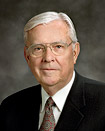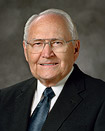I know, they're considerate like that.
To combat my inherent boring-ness, I decided to make a Plinko board to work into games and other activities. In Singing Time at primary, I think I'll call it Plink-go Sing-o!
In case you're interested, here's an overview of what I did:
1. Gather Materials
I used the following:- Pegboard - I bought a 4' x 4' piece and had it cut in half (for about $1 more than a single 2' x 4' piece at Lowe's, so under $9 for both pieces)
- Wood to frame it - I used two pieces of 1" x 2" x 8' (about $1 each)
- Dowels for the pins - I used ten 1/4" x 4' dowels that I cut by hand (because I'm a masochistic miser, apparently, and this saved me a few dollars--my cost was $6 total for the dowels), but you can likely find pre-cut 1/4" x 1.5" dowel pins.
- Dot stickers - I used these to mark my layout plan on the back
- Paint - I used a combination of super-cheap spray paint and acrylic paint
- Ping pong balls
2. Prepare Wood
I cut the 1x2 pieces to length (two 4' pieces; two 2' pieces) using a miter box set at 45 degrees for nice corners. They're shown here against the 2' x 4' pegboard.I also cut about 300 1.5" dowel pins in the miter box, but I tried to be smart about it. I bundled the dowels together (with a zip tie) as a single piece of wood and used a small template block of wood to help keep the lengths consistent. Take a look:
I then enlisted my son to help me quickly sand the ends of the dowels where they were rough:
3. Assemble Wood Pieces
I wanted the frame pieces to be flush with the outside edge of the pegboard. Unfortunately, the spacing of the pegboard holes didn't work, so I simply drilled pilot holes 5/16" (which is half the width of the "1 inch" side of the 1" x 2") in from the edge at strategic locations (using a 7/32" bit).After carefully positioning the frame pieces, I drilled pilot holes through the pegboard pilots into the wood, sunk wood screws, and added additional frame pieces using a dab of wood glue at the corners. Here's how it looked:
And a close-up of a corner:
4. Layout Pin Design
I planned my design on the computer (using Excel, which helped me know how many dowel pins I would need), but I wanted to see what it would look like on the board. I used round dot stickers to do this. As an added bonus, I figured the stickers would help me to get the pins in the right holes, and they might even help keep wood glue from leaking out the back when I glued the pins in.Here's the layout design on the back of the board:
5. Attach Dowel Pins
To glue the dowel pins in the pegboard, I dipped the pin in a small reservoir with wood glue in it (I used a cleaned milk container lid, put them in place, and lightly tapped them with a hammer to seat them fully. Some aren't as straight as they could be, but imperfections preserve the DIY feel to this project!6. Paint the Board
I used white spray paint as a base with the intention of adding a personalized touch afterward. Here's my spray paint station:And here's my team helping to add a touch of color. They used Q-tips to put dots of different colors of acrylic paint on the tips of the dowel pins:
Add a nice border, and it's done!
7. Test
The final step is to ensure that it still works after adding all the paint:The only remaining step is to have fun with it and keep it from falling apart!


















































